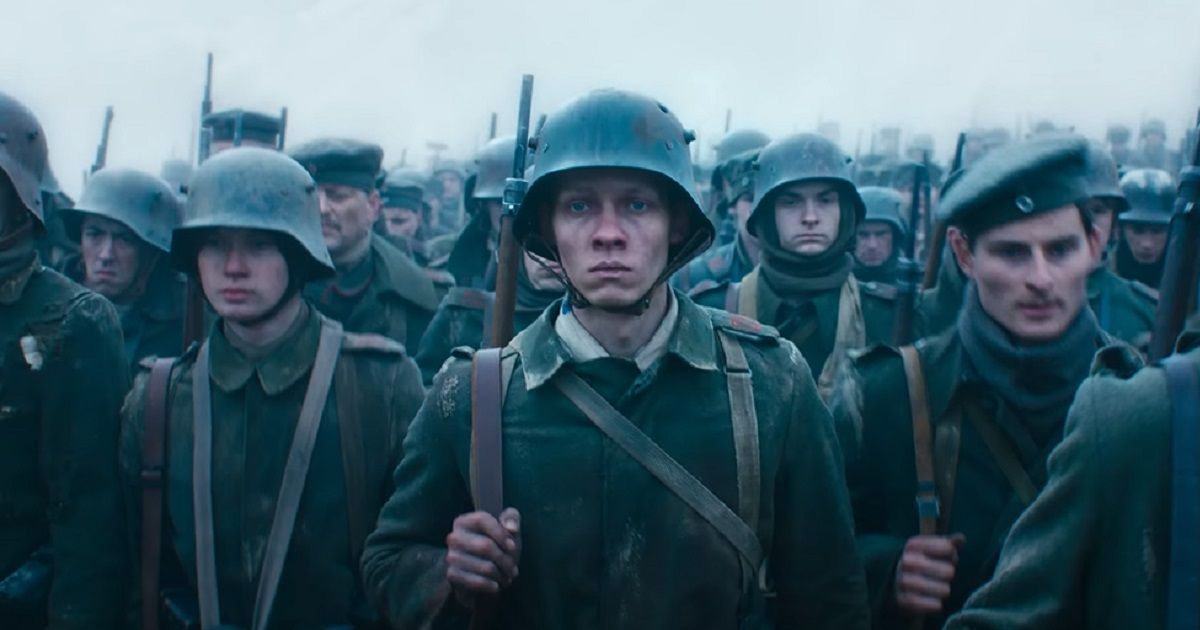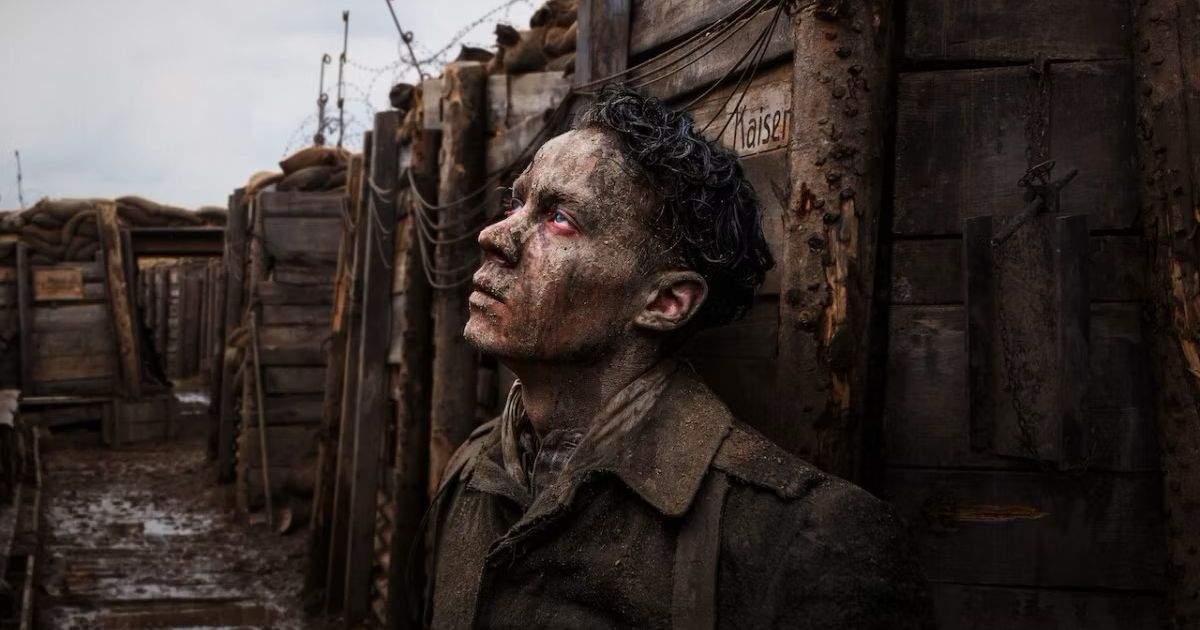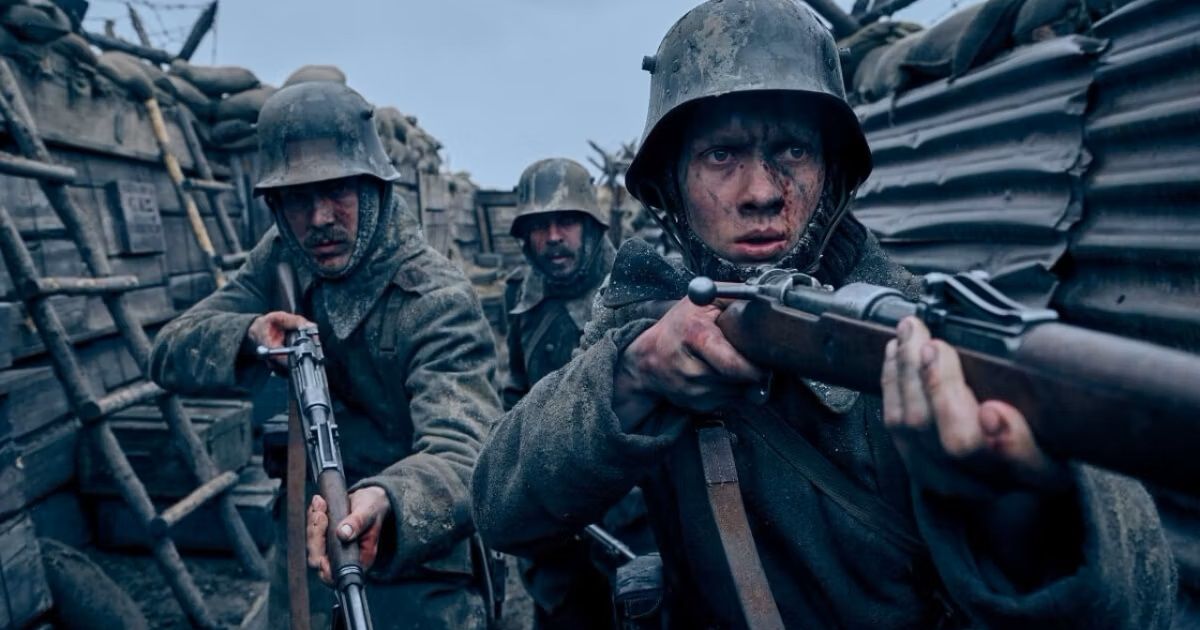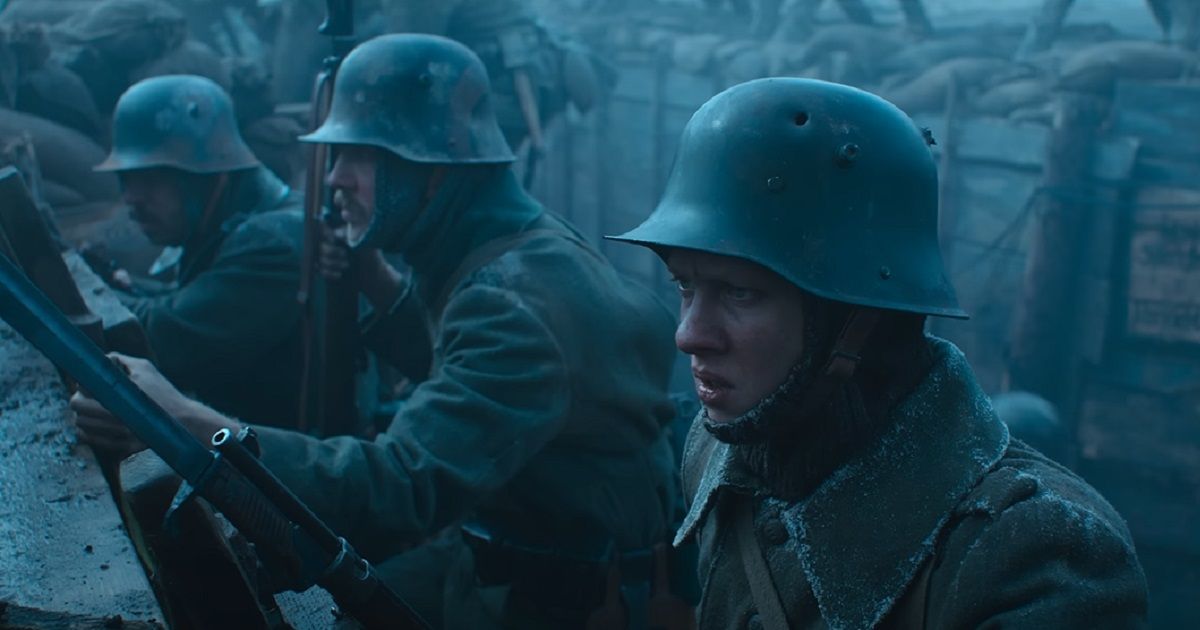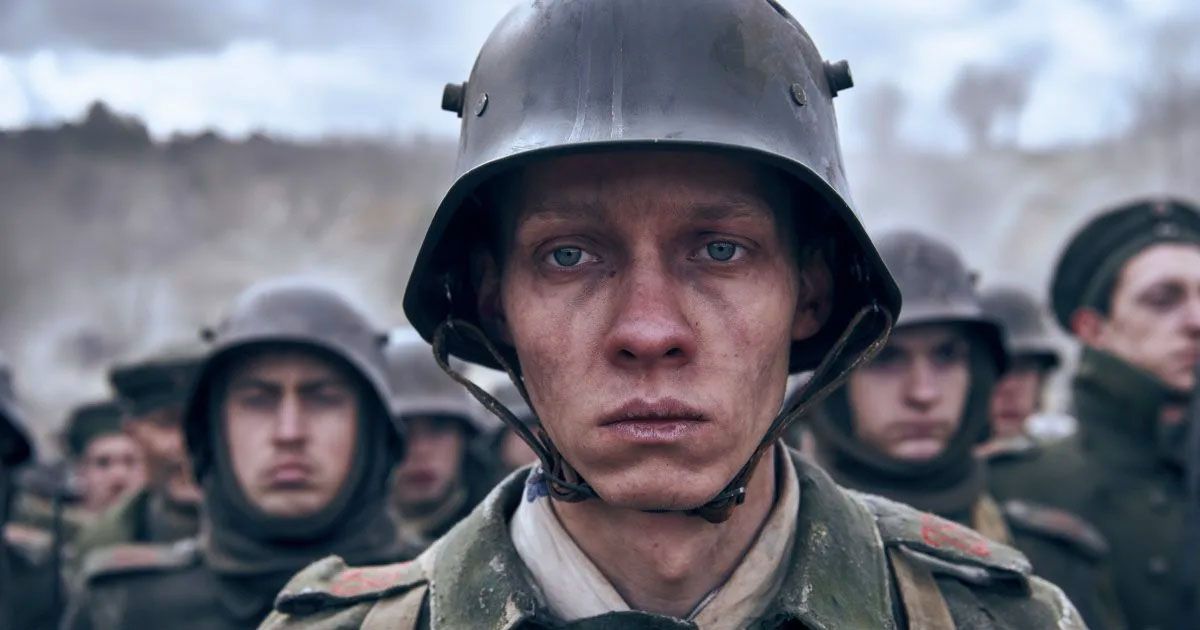It’s been a while since a war film has been as impactful as Edward Berger’s All Quiet on the Western Front. While there are a few honorable mentions, such as Dunkirk and 1917, the overall aftertaste of All Quiet on the Western Front is undeniable. War films often come under the scanner for conveniently emphasizing style over substance, and action over content. Edward Berger wisely sidesteps this narrative trap by creating an epic of high scale and stature without losing sight of its core values, making the film an intense yet entertaining experience to witness.
Symbolizes the Meaningless Nature of War
There is nothing hidden about the triviality or the brutality of war. It’s a commonplace fact. But Berger’s genius lies in telling us something we already know by portraying it through a juvenile lens of misinformed adventure, leaning on the proverb “the grass is always greener on the other side”. He begins the film with a conventional launchpad of four friends, eager to escape the clutches of modern mediocracy and aiming at living an exciting life with war being a conduit to it. As it often happens in life, this bubble of disillusion is rudely pierced by explosive bullets and bombs showered upon it by the enemy. The young friends namely, Paul Bäumer, Albert Kropp and Franz Müller soon experience the heat of the war melt away the murky foundation of ill-informed dreams from their faces. Soon the young men do not have time to think, for the only important thing to do is to survive. Surrounded by men crumbling, bodies falling, and bombs exploding; the number of the young men evaporated as their bodies nosedive and crash-land on the wet mud, bereft of all the dreams and desires they’d arrived with.
In a scene that takes place early on in the film, Bäumer enthusiastically enlists to join the army and is handed a uniform, he takes it and notices it has someone else’s name on it, he questions the officer in charge and the man sheepishly suggests that it’s probably too small for its previous owner, thereby tearing the name tag and dropping it to the floor. Berger then cuts to a low-angle shot of a few name tags falling on the floor, symbolizing the cyclic life span of recruits and the utter disregard for their existence.
Raw and Realistic Performances
For a cast that’s predominantly quite young and fairly new, the believability in their performances is nothing short of spectacular. The two standout performances in the entire film are the young and naive Paul Bäumer (Felix Kammerer) and the little older and experienced Stainslaus (Albrecht Schuch). Not taking away from other war film performances where mediocre actors hyperactively grunt and moan with a fake sense of bravado in an attempt to translate their energy into something meaningful on screen, the performances in All Quiet on the Western Front were different and nuanced on multiple different levels. While Kammerer and co yelled and bellowed in appropriate situations, they also retained a large sense of rawness and subtlety, giving the audience glimpses of the battle they were fighting within. Furthermore, Kammerer masterfully oscillates from youth’s naivety to the coarseness of a battle-hardened soldier, not a mean feat for an actor so young.
Gut-Wrenching Action Sequences
Right from the start, Berger and the team set the tone of the film by portraying the grim realities of war, erring on the side of pictorialism. After juxtaposing the true nature of war along with the effects it has on its surroundings, Berger begins his all-out assault on the senses of the viewer, immediately acting as a desensitizing agent of destruction. He then sets the tone for the rest of the film as he follows a soldier, who is thrown into the deep end by his commanding officer. The soldier does not hit the ground running. Amid a heavy barrage of bullets and explosions, it's obvious that the young boy doesn't know what he's doing or what he's got into, the only reality he knows is the consequences of action or inaction.
War From Different Proximities
As young German soldiers are being sent to the gallows, another war is fought in parallel; a war of pen and paper; a war of diplomacy. Within the German power circles, there is radical polarization about the nation’s stance regarding the war. On one end of the spectrum, there’s a German official, Matthias Erzberger (Daniel Brühl), who pleads with the German High Command to persuade them to begin armistice talks with the Allied powers. On the other end, there’s General Friedrich, who holds the opinion that Germany is being corrupted by weak diplomats and orders his soldiers into battle despite having a ceasefire agreement with the enemy. This parallel storyline accentuates the effects war has on the young soldiers as it brutally draws out comparisons with their older, more insulated superiors.

